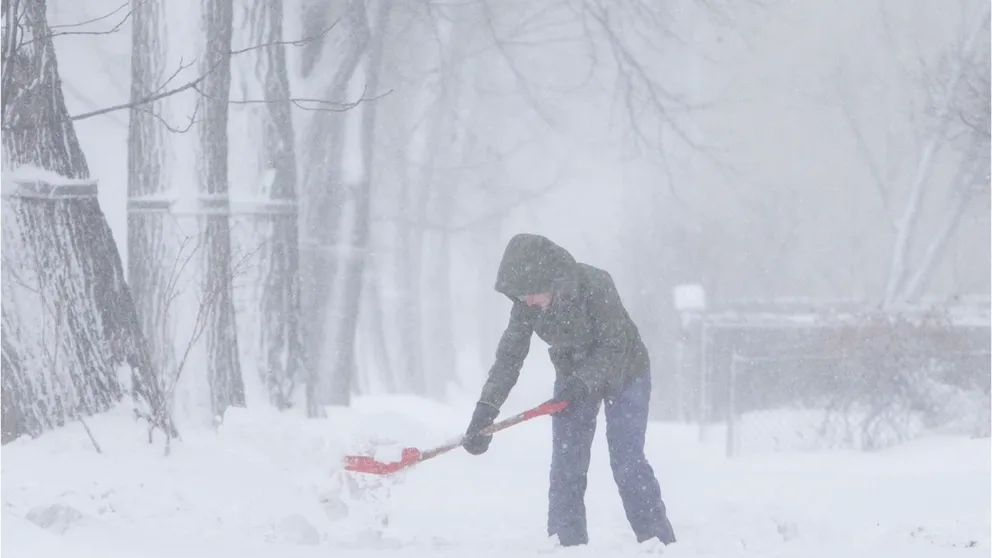How to prepare your family, home and car for a winter storm
Winter storms can bring power outages and other hazards. Here are ways you can prepare yourself and your family.
How to prepare your family, home and car for a winter storm
From storing enough food and water to weather-proofing your house to maintaining your car, here are some recommendations on how to prepare for winter storms.
Winter storms can mean being stranded at home or in your vehicle without power or heat.
From storing enough food and water to weather-proofing your house to maintaining your car, here are some recommendations on how to prepare for winter storms, according to the Centers for Disease Control and Prevention.
How to prepare your family
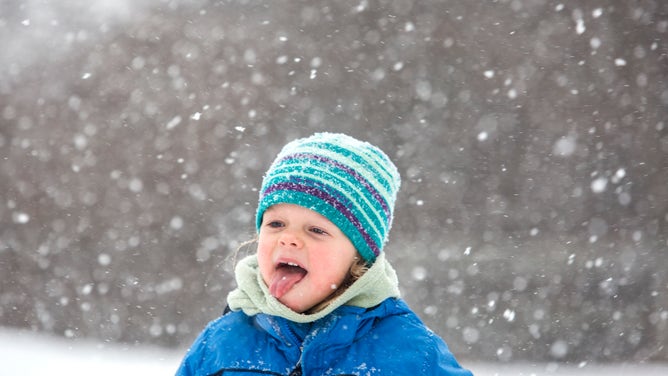
A girl tries to catch snowflakes on her tongue.
(Derek Davis / Portland Portland Press Herald / Getty Images)
Pay attention to weather forecasts
Stay informed about the forecast to know when inclement winter weather is on the horizon. A few days' notice will give you time to ready your house and family for any extreme, cold-weather conditions. Some ways to stay informed:
- Listen to forecasts on a weather radio or hand-crank radio.
- Watch forecasts on your phone, online or TV, such as the FOX Weather app, website and channel.
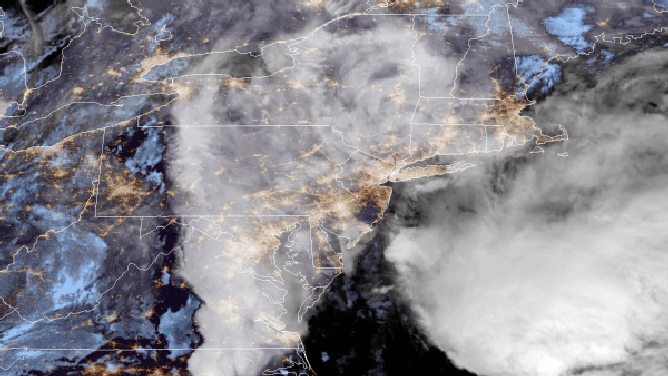
Satellite imagery of the Northeast being impacted by a nor'easter on October 26, 2021.
(NOAA)
Put together an emergency reserve of food and water
You need at least a three-day supply of non-perishable foods that don’t require heat for cooking. You’ll also need a gallon of bottled water per person per day for three days. Here are a few other items to keep around:
- A manual can opener.
- Disposable cups, plates, utensils, paper towels and trash bags.
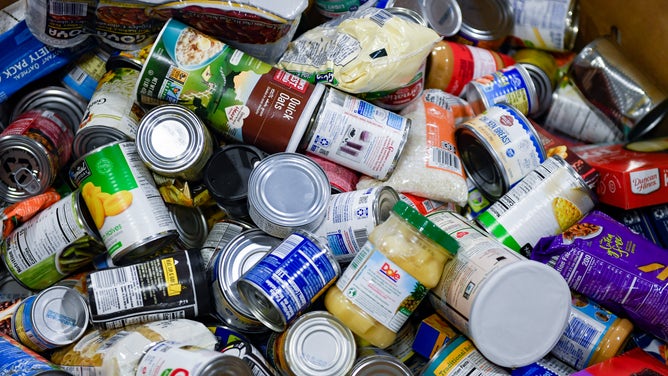
Canned goods.
(Ben Hasty / MediaNews Group / Reading Eagle / Getty Images)
Take care of your pets
Don’t forget about your furry, feathered or scaly family members. Be sure to bring your pets indoors, or, if that is not possible, give them enough shelter outside to keep them warm, along with access to water that remains unfrozen. A few other tips:
- Purchase a carrier for your pet and then train them to be comfortable being in the carrier.
- Place identifying collars and tags with your contact info on your pets. You can also microchip them.
- Store an emergency supply of food and water for your pets.
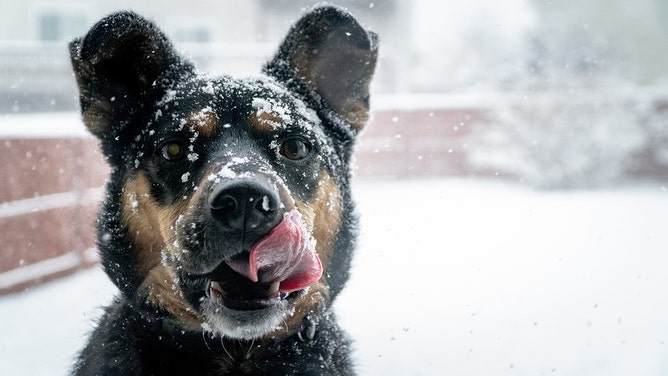
Winter weather can be beautiful to look at, and it certainly is fun to play in. Pet owners also know just how much fun their furry friends can have, especially in the snow.
(Kameron Kincade / Unsplash)
Make an emergency action plan
This will allow your entire family to be on the same page during a situation as stressful as a winter storm. The plan should include important documents and agreed-upon actions that each family member will take during the storm, such as:
- A list of helpful phone numbers, such as the Poison Control Center.
- Ask a friend or relative who lives outside the affected area to be your family’s out-of-town contact.
- Paperwork detailing the medical needs of family members.
- Important paperwork, such as wills and other legal documents.
- Identify a shelter-in-place location inside your home and a meeting spot outside your home, in case of an emergency.
How to prepare your home
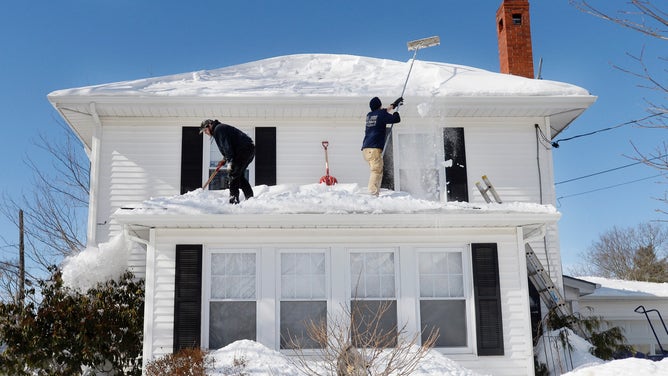
Larry Goodno, left, and Lewis Jarrett clear snow off the roof of a house on Brighton Ave. in Portland Wednesday, February 11, 2015.
(Shawn Patrick Ouellette / Getty Images)
Weatherproof the house
The CDC recommends taking action to prevent heat from escaping your home. This can keep pipes from bursting, decrease the cost of your utility bills, increase the value of your home and, most importantly, keep your family safe during a winter storm. Here’s how you can do that:
- Insulate water lines running along exterior walls.
- Insulate your walls and attic.
- Repair roof leaks.
- Caulk and weather-strip doors and windows.
- Install storm or thermal-pane windows. Otherwise, cover windows with plastic from the inside.
- Trim tree branches that could fall on your home during a storm.
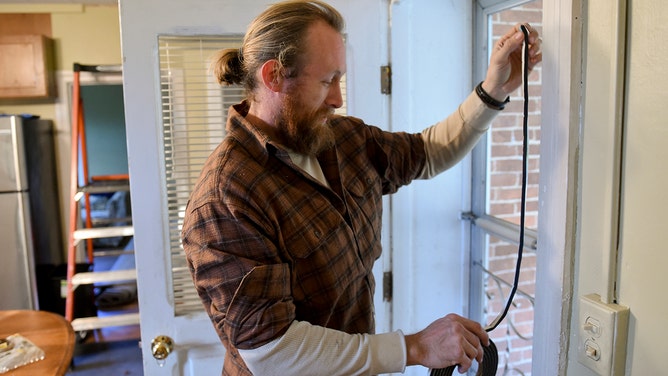
Weatherstripping, caulk, and window insulation keep warm air inside the home.
(Ben Hasty / Getty Images)
Have your chimney or flue inspected each year
If your family plans to use a fireplace or wood stove for emergency heating, be sure to have a professional inspect the chimney or flue annually. You can find a professional inspector by asking your local fire department or by looking online.
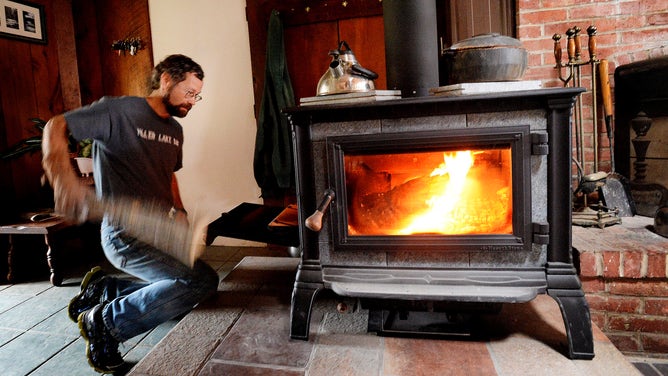
A man feeds his wood stove.
(Shawn Patrick Ouellette / Getty Images)
Think fire safety
When a winter storm knocks out the electricity and central heating, you may want to use alternative ways – such as fireplaces or wood stoves – to heat your home. If so, keep in mind the following measure to keep your family safe from potential fire hazards:
- Install a smoke detector and a battery-operated carbon monoxide detector near the heat source. Test the devices on a monthly basis and replace batteries twice a year.
- Make sure all fuel-burning equipment is vented to the outside.
- Keep a multipurpose, dry-chemical fire extinguisher nearby.
- Have a professional inspect your furnace system and vent every winter.
How to prepare your vehicle

A car navigates a snow-covered street on February 02, 2022 in Chicago, Illinois.
(Scott Olson/Getty Images)
Maintain your vehicle
Take your vehicle in for maintenance as often as the manufacturer recommends, according to the CDC. Leading up to the winter months, be sure to your car is prepared in these ways:
- Have the radiator system serviced or check the antifreeze level with an antifreeze tester. If necessary, add antifreeze.
- Check your tires to make sure they have enough tread and air pressure (usually between 30-35 psi). If necessary, replace old tires and adjust the air pressure accordingly.
- Keep the gas tank near full. This will help you avoid waiting in the fuel line and help prevent ice from developing in the tank.
- Make sure the following are working properly or are at proper levels: the heater, defroster, brakes, brake fluid, ignition, emergency flashers, exhaust, oil and battery.
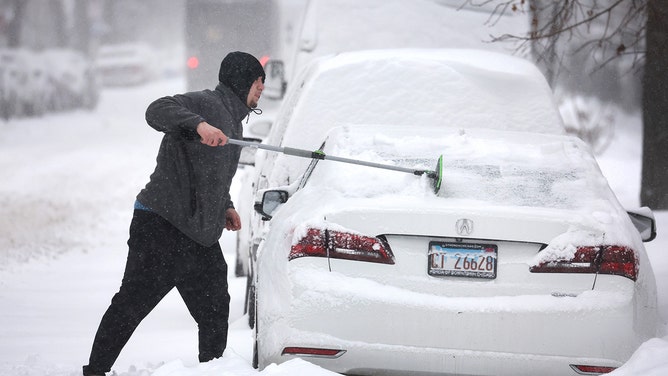
A man clears snow from his car on February 02, 2022, in Chicago, Illinois. A massive storm, working its way across the Midwest, is expected to dump as much as 16 inches of snow in some areas.
(Scott Olson / Getty Images)
Create an emergency car kit
The CDC recommends that people avoid traveling during inclement weather. But if travel is necessary, they suggest keeping the following in your car:
- Extra blankets, coats, hats, mittens and other items to help you stay warm.
- Water and snack food, plus a first aid kit with medications and a pocket knife.
- Waterproof matches and a can, so you can melt snow for water.
- Cell phone, portable charger, flashlight, battery-powered radio and extra batteries for all.
- Shovel, windshield scraper, plus road salt to melt ice and cat litter or sand to give tires traction.
- Tow chains or rope, tire chains and canned, compressed air with sealant for emergency tire repair.
- Hazard or other reflectors, brightly-colored flag or help signs and an emergency distress flag and/or flares.
